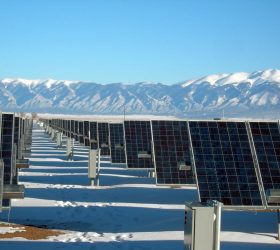The main, most simple solar water heaters were basically dark metal compartments, for example, barrels or drums, that were set in daylight. Water filled them, ingested warm from the sun, and after that set out through a pipe to the home’s boiling water framework.
Present day solar water heaters utilize a similar fundamental standard yet join a refined arrangement of pumps, stockpiling holders, and accumulation gadgets to expand the measure of the sun’s vitality exchanged to the water, the boiling water created, and the vitality held. Almost all cycle high temp water into a current traditional tank-style water warmer that has an optional wellspring of warmth and in this way diminishes the vitality stack expected to keep up boiling water. The regular water warmer goes down the solar radiator on overcast days and times of expanded request.
There are 2 kinds of solar water warming frameworks, uninvolved and dynamic. Dynamic frameworks are all the more usually utilized as a part of cool atmospheres like our own.
- Dynamic frameworks have solar authorities mounted on a rooftop or south-bound divider. These authorities ingest the sun’s radiation through a warmth exchange fluid.
- The radiation is changed over into useable warmth vitality by pumping the warmth exchange fluid through a warmth exchanger that exchanges the vitality to the water warmer framework.
- This warmth exchanger pre-warms the water entering the ordinary water warmer framework, lessening the measure of vitality expected to warm up water to the coveted temperature.
Just dynamic frameworks meet all requirements for the Residential Earth Power Loan.
Regular dynamic frameworks
The most widely recognized dynamic frameworks utilized as a part of Manitoba are drainback and glycol.
Drainback frameworks utilize pumps to course family water between the gatherers and a water radiator inside your home. At the point when the gatherers get cool and the pumps are killed, water consequently depletes from the authorities into a repository tank inside the home.
Glycol frameworks catch and store warm in a shut circle loaded with a propylene glycol (liquid catalyst) arrangement. The warmth is exchanged to the water supply by a warmth exchanger.
Look at the execution, cost, establishment, and support of the two frameworks.
Drainback framework:
- water is a more proficient warmth exchange fluid than glycol;
- might be more costly, as it requires a drainback tank;
- cautious establishment is required to guarantee that water depletes naturally when fundamental;
- insignificant yearly upkeep.
Glycol framework:
- glycol warm exchange effectiveness lessens after some time;
- might be more affordable, yet requires intermittent glycol substitution;
- might be simpler to introduce as position of authorities and funnels isn’t basic for solidify security;
- glycol ought to be supplanted each 2 to 5 years.
Solar authorities
A few kinds of solar gatherers are accessible with the most widely recognized being level plate (coated or unglazed) and cleared tube.
A coated level plate authority framework comprises of solar warmth safeguard plates fitted with a system of copper tubes. The tubes are in a glass-secured (coated) encasing box. The sun goes through the glass and warms up the liquid in the copper tubes. The coating lessens the measure of warmth that getaways and shields the boards from dampness and different contaminants. Most family frameworks comprise of 1 or 2 gatherers. Unglazed level plate authorities can retain a greater amount of the sun’s vitality yet loses more warmth to the air in colder climate. Unglazed authorities function admirably in occasional applications like summer outside pool warming.
An emptied tube gatherer framework comprises of a progression of protected glass tubes that are orchestrated in parallel lines, each containing a little safeguard pipe. The inward pipe retains solar vitality and exchanges it to a water or glycol arrangement. The air between the pipe and the glass is cleared to trap warm in (like a canteen), augmenting the measure of warmth vitality exchanged to the liquid. These emptied tube gatherer frameworks tend to consume up less room than proportional level plate authority frameworks.
Think about the execution, cost, establishment, and upkeep of the two authorities.
Coated level plate authorities:
- regularly performs better on warm, crisp mornings;
- might be more affordable;
- heading and edge is less basic, giving more establishment choices;
- the entire gatherer may should be supplanted if a bit of it falls flat.
Cleared tube authorities:
- can deliver higher yield temperatures at extremely icy temperatures;
- might be more costly;
- course and point is more basic, giving less establishment choices;
- singular tubes can be effectively supplanted with little impact in general framework.
